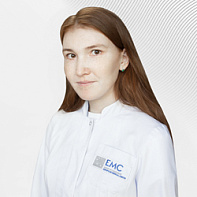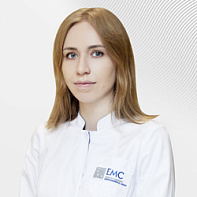Electroneuromyography
Electroneuromyography (ENMG) is a research method that records muscle activity and the rate of passage of a nerve impulse through nerve fibers.
This study relates to functional diagnostic methods and is used in cases of suspected pathology of mainly the peripheral nervous system, the muscular system, as well as in a number of genetic diseases accompanied by impaired functioning of nerves and muscles.
As a rule, neurologists, neurosurgeons, surgeons, and endocrinologists refer the patient to electroneuromyography, while pointing in the direction of the intended diagnosis or examination area. In some cases, it is necessary to expand the research program by such methods as transcranial magnetic stimulation (TMS) and/or evoked potentials (VP)
.
Stimulation electroneuromyography
Stimulation ENMG allows you to determine where there is a violation of the propagation of impulses along nerve fibers, for example, in areas of the body from the neck to the hand or from the lower back to the foot. Stimulation ENMG is used to diagnose peripheral nerve damage and differentiate nerve damage from muscle or spinal cord damage (for example, in neuritis/neuropathies, plexopathies, tunnel syndromes, polyneuropathies), as well as to assess neuromuscular junction disorders (for example, in myasthenia gravis). To do this, electrodes are applied to the projection areas of nerves and their corresponding muscles on the patient's body and stimulation is performed using short electrical discharges, while the passage of a nerve impulse through various parts of the body is recorded. The advantages of the method are non-invasiveness, speed and ease of execution. The short duration and form of the electric discharge stimulus is safe even for patients with pacemakers and can be performed on all patients without exception. In particular, the American Association of Neuromuscular and Electrodiagnostic Medicine reports that there are no current contraindications to stimulation and needle EMG in pregnant women and patients with pacemakers.
Needle electromyography
Unlike stimulation EMG, needle electromyography is an invasive procedure that uses a single-use thin needle electrode inserted by a doctor into several different muscles to identify local or generalized pathology of nerves, their plexuses and the muscles themselves. Needle insertion may be accompanied by minor soreness, which does not require any special anesthesia and is well tolerated by most patients.
During the examination, the doctor performing electromyography decides which muscles need to be examined in order to make a diagnosis. Electrical stimulation is not required in this study. Needle EMG data is converted into audio and graphic information using an electromyograph device, which is further analyzed and interpreted by a doctor. This technique allows you to more accurately determine the level and stage of damage in most pathologies of the peripheral nervous system, as well as help in the diagnosis of acquired and hereditary muscle pathologies such as myositis, muscular dystrophy.
Evoked visual and auditory potentials
Evoked visual potentials is a non-invasive study that registers an impulse in response to a visual stimulus and allows you to evaluate the conduction along the optic nerves and structures of the brain.
Electrodes are applied to the occipital region of the head, and visual stimulation is performed by looking at a monitor screen with black and white cells, the so-called "checkerboard pattern".
Evoked auditory potentials is a method that registers an electrical potential from the auditory nerve of the brain in response to a patient's sound stimulation through headphones. This method allows you to identify the pathology of the auditory nerve and brain. Visual and auditory potentials are often used to diagnose and evaluate therapy for multiple sclerosis.
Evoked somatosensory potentials
Somatosensory evoked potentials (SSPs) is a diagnostic method that records electrical responses from the limbs, spine, and head in response to electrical stimulation of the motor and sensory nerves of the arms and legs. Such a study is mainly used to assess the conduction of the spinal cord and brain, as well as nerve structures in the cervical-brachial and lumbosacral plexuses. SSRIs help in the diagnosis of multiple sclerosis, degenerative-dystrophic diseases of the spine (osteochondrosis) and other pathologies of the central and peripheral nervous systems.
Preparation for electroneuromyography
The study can last from 20 to 90 minutes. There is no need to come on an empty stomach, limit physical activity before or after the examination. If the patient uses contact lenses or glasses, then it is necessary to wear them for the correct measurement of visual evoked potentials. There are no side effects, including no effect on the ability to drive a car. If the patient is taking blood-thinning medications (aspirin, warfarin), has hemophilia, or has a pacemaker installed, it is necessary to tell the doctor about this before the examination. It is recommended to take a bath or shower before the electroneuromyography to "degrease" the skin and not use lotions on the day of the examination.
Get help
Specify your contacts and we will contact you to clarify the details.
Doctors

Murat Shomakhov
-

Yuliya Aleshchenko
-

Izabella Maskurova
-

Evgeniya Aleksandrova
Ph.D. of Medical Sciences
-

Mikhail Zaytsev
-

Ananeva Liliia
-

Dragan Ivan
-

Mityukova Marina
-

Kameldenova Dinara
-

Ermilova Elizaveta
-
.jpg)
Volkov Sergey
-
.jpg)
Shchelukhin Alexandr
-

Eliseev Yuriy
-

Kamchatnov Pavel
Doctor of Medicine, Professor
-

Fitze Ingo
Head of the Interdisciplinary Sleep Medicine Center at the Charite University Hospital (Berlin, Germany), founder of the private sleep Medicine Institute Somnico GmbH in Berlin., Professor, Doctor of Medicine
-

Ilyin Nikolai
-
.jpg)
Medvedeva Anastasiya
Ph.D. of Medical Sciences
-
.jpg)
Pechatnikova Natalia
Hereditary metabolic diseases
-

Nogovitsyn Vasiliy
Leading pediatric neurologist and epileptologist, Ph.D. of Medical Sciences
-
.jpg)
Maslak Andrey
Clinical neurophysiology and neuromuscular diseases
-
Murat Shomakhov
- Specializes in the treatment of chronic pain
- Performs diagnostics of headaches, back and limb pain, selects medical treatment
- Chen of the Association for Interventional Pain Management
Total experience
17 years
Experience in EMC
since 2025




